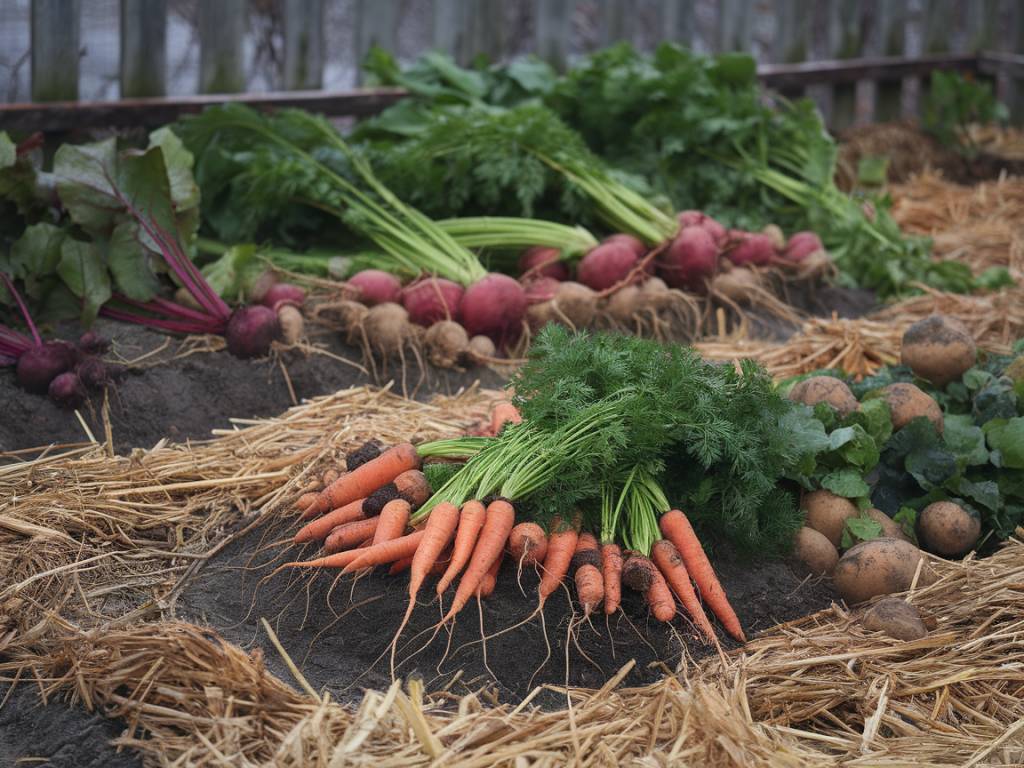As winter approaches, the thought of freshly harvested root vegetables can be particularly appealing. Growing a winter garden for root vegetables not only helps you enjoy fresh produce during the colder months, but it also makes good use of your garden space throughout the year. Root vegetables such as carrots, parsnips, and beets can thrive even when the temperature drops, provided you prepare and maintain your garden properly. Let me guide you through the process of creating your own winter garden for root vegetables.
Choosing the Right Root Vegetables
First, selecting the appropriate root vegetables is crucial for a successful winter garden. Some root vegetables are better suited for colder weather than others. Here are some excellent options:
- Carrots
- Parsnips
- Beets
- Turnips
- Rutabagas
- Radishes
These vegetables are hardy and can withstand cold temperatures, making them ideal candidates for your winter garden. Remember to choose varieties that are specifically bred for winter growing, as they will have better resilience to frost and cold weather.
Preparing the Soil
Healthy, well-prepared soil is essential for root vegetables to thrive. The soil should be loose, well-drained, and rich in organic matter. Before planting, follow these steps:
- Clear any debris or old plant material from the garden bed.
- Work in plenty of compost or well-rotted manure to improve soil structure and fertility.
- Ensure good drainage to prevent waterlogging, which can cause root rot.
Root vegetables necessitate deep cultivation to allow their roots to grow uninterrupted. Use a garden fork to loosen the soil to a depth of at least 12 inches, breaking up any clumps.
Planting Root Vegetables
Timing is crucial when planting root vegetables for the winter. Aim to sow your seeds in late summer or early autumn, depending on your local climate. Here’s a general guideline:
- Carrots: Sow seeds 10-12 weeks before the first expected frost.
- Parsnips: Plant seeds 12-14 weeks before the first frost.
- Beets: Sow seeds 8-10 weeks before the first frost.
- Turnips: Plant seeds 6-8 weeks before the first frost.
- Rutabagas: Sow seeds 10-12 weeks before the first frost.
- Radishes: Plant seeds 6-8 weeks before the first frost.
Plant the seeds in rows, with ample space between each plant to allow for proper root development. Refer to the seed packet for the recommended planting depth and spacing.
Protecting Your Winter Garden
Winter weather can be unpredictable, so it’s essential to take measures to protect your garden. Several techniques can help keep your root vegetables safe from frost and extreme temperatures:
- Mulch: Apply a thick layer of mulch, such as straw or shredded leaves, around your plants to insulate the soil and retain moisture.
- Row Covers: Use row covers or cold frames to shield your plants from harsh winds and frost. These can be easily removed during milder days to allow for proper air circulation.
- Cloche: For individual plants, consider using cloches (mini-greenhouses) to protect them from the cold.
Regularly monitor your protective measures to ensure they remain effective throughout the winter.
Watering and Maintenance
Even during the colder months, your root vegetables require proper care. Water your winter garden consistently, making sure the soil remains moist but not soggy. The frequency of watering will depend on your local climate and rainfall, but generally, you should water once a week.
Keep an eye out for pests and diseases, even though they are less prevalent in colder weather. Remove any dead or yellowing leaves promptly to prevent disease spread. Regularly inspect your plants and take action at the first sign of trouble.
Harvesting Root Vegetables
One of the joys of a winter garden is harvesting fresh vegetables straight from the soil when you need them. Most root vegetables can be left in the ground until you are ready to use them. Here are some harvesting tips:
- Choose a mild day to harvest your vegetables to avoid damaging the roots.
- Use a garden fork to gently lift the vegetables from the soil, taking care not to damage them.
- Brush off excess soil and store your harvested vegetables in a cool, dark place if you’re not using them immediately.
By staggering your planting times, you can ensure a continuous supply of fresh produce throughout the winter months.
Embracing Permaculture Principles
Incorporating permaculture principles into your winter garden can enhance its sustainability and productivity. Here are a few principles to consider:
- Companion Planting: Planting certain vegetables together can improve growth and deter pests. For example, interplanting radishes with carrots can help reduce pest issues.
- Soil Fertility: Maintain soil fertility by rotating crops and adding organic matter regularly to prevent nutrient depletion.
- Biodiversity: Encourage biodiversity by planting a variety of crops and integrating flowers and herbs that attract beneficial insects.
By following these permaculture principles, you can create a more resilient and healthy garden ecosystem.
My Personal Tips for a Successful Winter Garden
As a gardener, I’ve learned a few tricks over the years that can make a significant difference in your winter gardening success:
- Plan Ahead: Mark your calendar with key planting and harvesting dates to ensure timely sowing and picking.
- Save Seeds: Collect seeds from your best plants to use in the next growing season, promoting plant varieties that thrive in your specific conditions.
- Keep Records: Maintain a garden journal to track what you planted, when you planted it, and any issues you encountered. This can be invaluable for future planning.
- Stay Adaptable: Be prepared to adapt your approach based on weather conditions and other unexpected challenges. Flexibility is key to successful gardening.
Cultivating a winter garden for root vegetables can be incredibly rewarding. With careful planning and attention to detail, you can enjoy fresh, homegrown produce even during the coldest months. Embrace the winter season as an opportunity to expand your gardening repertoire and savour the fruits (or in this case, roots) of your labour.
Happy gardening!
Samanta
